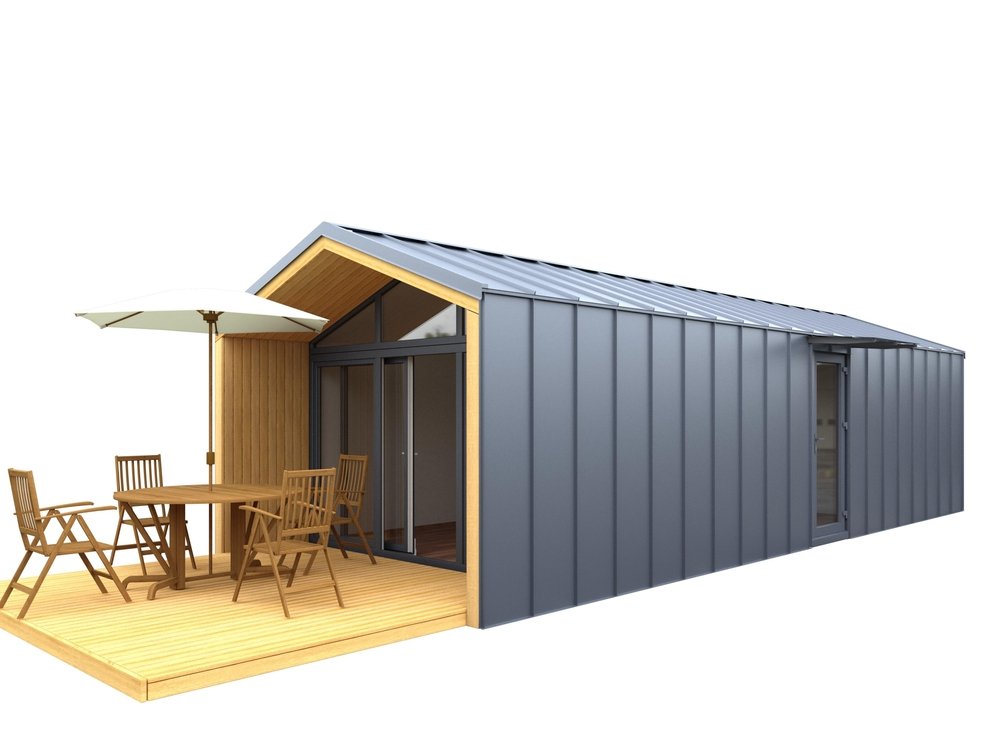In our 21st century world characterized by its excesses, does the idea of ‘less is more’ resonating with you? Have you ever dreamed of a simpler, decluttered life? If so, joining the tiny home movement might be just what you’re looking for. This comprehensive guide explores the realities, both challenging and rewarding, of transitioning into a tiny home.
While living in a pint-sized house may initially seem intimidating or impractical, many have found charm and freedom in the minimalist lifestyle it encourages. But beyond the romantic appeal of a clutter-free existence, what are the practical implications of such a shift in lifestyle? How could one thrive and not merely survive in such a confined space? This guide is designed to provide answers to these questions and more, offering an in-depth exploration of the tiny home phenomenon.
Why has the desire to ‘downsize’ captured our collective imagination? Well, the answers lie in the potential advantages and unique experiences this alternative lifestyle provides. From environmental to financial to philosophical reasons – there is a multifaceted allure to the concept of tiny home living. But despite its apparent appeal, it’s crucial to understand that this way of life comes with its unique challenges.
Rationalizing The Tiny Home Movement

Why are people attracted to the idea of downsizing and adopting the tiny home lifestyle? For many, it’s about sustainability and living a ‘green’ life. With a smaller footprint, tiny homes use fewer resources and often incorporate eco-friendly materials and energy-efficient designs.
Another potent allure is financial freedom. Traditional homes often come with hefty mortgages. Conversely, a tiny home is significantly less burdensome and can offer the prospect of a debt-free life. Then there’s the central philosophical notion resonating with many supporters: the pursuit of simplicity, minimalism, and a life stripped of unnecessary material possessions.
Furthermore, tiny homes are often mobile, offering the freedom of a nomadic lifestyle. It signifies that an adventurous spirit seeking new experiences can find a home that can journey along with them.
Designing A Functional And Harmonic Tiny Home
What principles guide the design and layout of tiny homes? Possibly the most significant aspect is the priority given to functional use of space. Every square inch is strategically utilized to ensure the home offers the comforts and amenities of a full-sized house.
Another central tenet is the concept of multipurpose spaces – an area that can fluidly transition from a kitchen to a workspace to a bedroom. Here lies the beauty and the challenge of tiny home design – creating a space that’s functional, comfortable, and aesthetically pleasing.
Embracing The Challenges Of Tiny Living
While tiny home living has many benefits, it also comes with a unique set of challenges. Understanding and preparing for these challenges is crucial for anyone considering this lifestyle.
One of the biggest challenges is space limitation. It necessitates a minimalist lifestyle and presents certain logistical issues, especially related to storage. Moreover, a tiny home might not be suitable for large families or those who entertain frequently.
There are also legal implications to consider. Zoning laws and building codes differ vastly across regions, and it is crucial to understand that not all areas are tiny house friendly.
Pros And Cons Of Tiny House Living
There are numerous rewards to tiny house living, such as lower living costs, decreased environmental impact, and the enjoyment of a simpler lifestyle. However, challenges like limited space, potential legal issues, and potentially difficulty finding a permanent location, can factor into the decision-making process.
Lessons From Real-Life Tiny Homeowners
Who better to look to for a glimpse into the reality of tiny house living than those who’ve already taken the plunge? Their stories provide invaluable insights about the advantages, pitfalls, and the unforeseen nuance of life in a truly petite home.
Conclusion

Tiny house living isn’t just about downsizing your dwelling. It represents a fundamental shift in mindset toward sustainability, minimalism, and mindful living. It offers an escape from the hamster wheel of incessant consumerism and to a life of simplicity and financial freedom.
Notwithstanding, this alternative lifestyle is not without its challenges. It necessitates sacrifices, ingenuity, resilience, and a deep commitment to living ‘small.’ But those willing to take the plunge often find the rewards far outweigh the hurdles.





